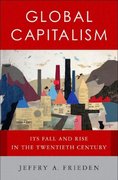Question
Consider an economy that produces tea and rice. Each requires a different type of land, so the flat, low-lying flood land used for rice is
Consider an economy that produces tea and rice. Each requires a different type of land, so the flat, low-lying flood land used for rice is a factor specific to rice, and the hilly land used for tea is specific to tea. However, labor can move freely between the two sectors, so that the wage paid to labor in both sectors is the same. Suppose the marginalproduct of labor in the tea sector is given by 120 LT, where LTis the number of workers in the tea sector, and the marginal product of labor in the rice sector is givenby 120 LR, where LRis the number of workers in the rice sector.
Suppose that there are 120 workers, 100 rice farmers who own the low-lying land and 100 tea growers who own the hilly land in the economy. Assume that the economy is a net importer of rice.
(a) If the world price of tea and the world price of rice are both $1 per unit, and if the country has a free-trade policy so that the domestic price of each good is equal to the world price, find the equilibrium allocation of labor to each sector, the quantity of each good produced in this economy, the wage, the rental on land in the tea sector and the rental on land in the rice sector.
(b) Now, suppose the government imposes a 100% ad valorem tariff on rice imports, doubling its domestic price to $2. Repeat the analysis of part (a).
(c) Who benefits from the tariff? Who is hurt? Is there any group for which you cannot tell?
Step by Step Solution
There are 3 Steps involved in it
Step: 1

Get Instant Access to Expert-Tailored Solutions
See step-by-step solutions with expert insights and AI powered tools for academic success
Step: 2

Step: 3

Ace Your Homework with AI
Get the answers you need in no time with our AI-driven, step-by-step assistance
Get Started


